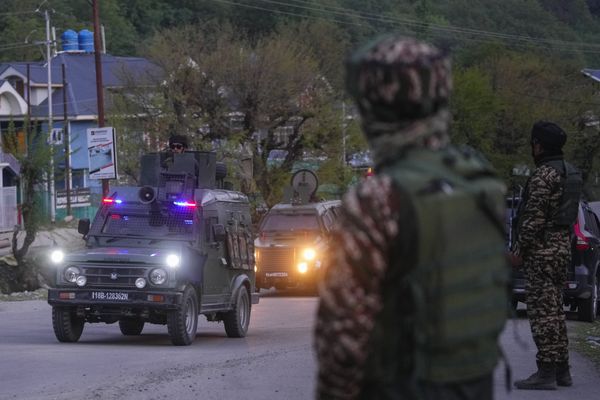
The week’s news cycle, clogged with the surplus reportage of elections, briefly took note of the two fire tragedies in Rajkot and Delhi, which together claimed 34 lives — at least 27 were dead at the gaming centre in Rajkot and, merely a few hours later, seven died at a newborn child nursing centre in Delhi.
Even if the number of victims and their vulnerability to the tragedy struck people with some shock value, the banality of deadly fire incidents in urban India has meant that another such incident may be only hours away. In the last 24 hours, two more fire incidents have taken place – one claiming three lives in Tamil Nadu and another massive fire at Delhi’s Kashmere Gate. The news of some of them is tucked away daily in the local pages of newspapers, looking like the collateral costs of dense living in urban space.
In Delhi, for instance, it takes tragedies with numbers – like the death count of 45 workers in the 2019 fire at a school bag factory in Anaj Mandi – for people to register them in their memory for a week or two. But that doesn’t tell how regular such occurrences of deadly fire are in the city. A Times of India report in February said that in the last two years, there have been 800 factory fires in the national capital. And that’s just the figures for one metropolis in the country.
But even if such tragedies seem nearer than we think – ranging from the unregulated congested space of small commercial ventures to high end buildings and housing – there has been scant regard for preparing for the exigencies. These tragedies somehow seem to fade away with the wear and tear of dense living in urban habitations until a new one strikes.
A high number of buildings haven't even got the basic firefighting mechanism in place. Sometimes the emergency exit routes are practically non-existent; they were missing in the recent incidents in Rajkot and Delhi as well.
In many cases, the lure of maximising every inch available and cutting operational costs has combined to make owners, as well as tenants, give a short shrift to fire safety measures in the building. The risks aren’t confined only to small workshops, factories, or establishments like hospitals or amusement centres. They are very much present in quite unsuspecting places, in the shared public space as well as in the private realm.
The ill-preparedness for fire emergencies can sometimes be seen in desperate escapes, which in turn can only add to the disaster. Last June, for instance, there were dramatic images of many students of a coaching institute jumping out of windows or clinging to pipes and rope while descending from the four-story building which caught fire in the Mukherjee Nagar locality of north Delhi. Many of them got injured in the climbdown, though they managed to save their lives. The building also housed many commercial establishments; institutes were only one of them. Narrow stairs, no fire safety equipment, and no emergency exit– all that made it a death trap that students were lucky enough to escape.
Such cases, or at least the response to them, can’t be attributed to the mere randomness of an accident. The builders and owners of such urban properties seem to regard fire safety measures as a wasteful expense, let alone being alert to them. At the same time, with fire services largely being a municipal concern, the regulatory authorities haven't been particularly attentive to the fire safety protocols recommended by the Bureau of Indian Standards in the National Building Code, 2016.
Even if the fire service, as a mechanism for minimising damage to life and property, is a state subject, the central view of the challenge at the national level admits the gaps in its organisation. The Union Home Ministry has pointed out that “fire services aren’t
well organised in India”. Moreover, as an editorial comment in The Hindu noted, the ministry informed the Rajya Sabha in 2019 that there were only 3,377 fire stations in the country, while a national report on fire hazards in 2019 recommended doubling the number of fire stations. There hasn’t been a considerable increase since.
The number of fire service personnel was also far behind the required strength; the count was 55,000 in 2019, while the recommended strength was 5,60,000 almost a decade ago. Clearly, the expansion of the response system to fire incidents hasn’t been a priority of the state governments, and in turn, the municipal bodies have to manage resource-deficits in combating raging fires. Along with the equipment, access to the site also poses a key question, as urban congestion has made the reachability of many affected areas a challenge in moments of crisis.
Besides shared public buildings and public spaces, private residential spaces are also vulnerable to fire tragedies. The very day the recent Delhi child care centre fire broke out, another fire tragedy was reported in a residential block. In fact, on May 28 and May 29 alone, the Delhi fire service reported receiving 183 calls of fire incidents, and not all of them could be from public buildings or factories. That makes the question of access to housing structures important for fire service personnel, and in turn, the prompt availability of firefighting response is a matter of critical importance for the residents.
The question of compliance or stricter accountability measures often takes the form of legalistic reflex action to one fire tragedy or another—some of them etched more deeply in public memory, like the Upahar cinema fire tragedy of 1997 in Delhi or the Kumbakonam fire tragedy of 2004 in Tamil Nadu, in which 94 schoolchildren and a teacher were burned to death. Sometimes they have meant protracted legal battles, and the court proceedings in both of these horrific tragedies are striking examples of the legal maze in which accountability often gets stuck. One may add to that the lack of regulatory will, if not incompetence, in monitoring a few little but insidious aspects of fire safety. One of these aspects, for instance, could be the safe storage of highly inflammable substances in many small workshops housed in congested spaces or the state of the wiring systems in buildings – two of the most common causes of fire hazards.
But far more than the glaring gaps in compliance and accountability, what’s strikingly clear is how many fire incidents fade away in invisibility, as if an adjunct of banal negotiations with life in plain sight.
Lore has it that, for almost 25000 years, Buddha cautioned the urban centre of Pataliputra against the dangers of fire, flood, and feud. While urban flooding is now becoming a part of modern metropolises, the raging threat of fire seems to be engulfing India’s urban settlements far more frequently than their residents would like to forget. The major tragic incidents in Rajkot and Delhi shake off the invisibility of the threat for a while before one gets back to the daily capsules of fire claiming life and property in the inside pages of newspapers. The everyday fires burn as much, snuffing out lives in the most horrific ways.
Five independent media outlets are coming together to bring the sharpest insights on results day. Here's how you can contribute.
Newslaundry is a reader-supported, ad-free, independent news outlet based out of New Delhi. Support their journalism, here.







